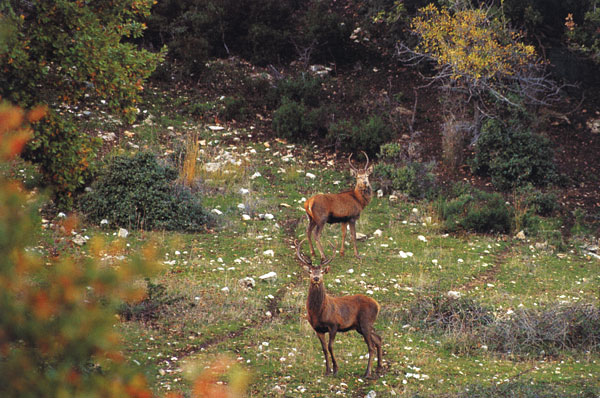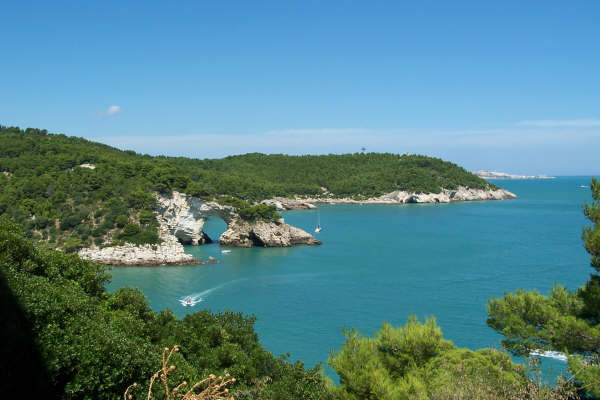
Gargano National Park and Wild Orchid Collection
This post is also available in:
 Italiano (Italian)
Italiano (Italian)
The Gargano, now a National Park, is the spur of Italy, with the very shape of a boot.
Established in 1991, it is one of the largest Italian parks.
This promontory is mainly made of limestone and was originally completely covered by forests, now reduced to 15% of their original surface; the Umbra Forest, for instance, it the very green “heart” of the entire park.
The park is made of several nature reserves, including Isola di Varano and its lake, on the Gargano coast, Torre Mileto, a Saracen tower which is now the visitor centre of the park, Lake Lesina, favoured by eel fishermen and birdwatchers, as well as a very popular place among grey and white herons and other birds.
Flora and fauna
The park features beech woods (Fagus sylvatica) located at 984 ft above sea level and rich in centuries-old specimens. There are also many yews (Taxus baccata), hornbeams (Carpinus betulus), and Aleppo pines (Pinus halepensis).
The Gargano is also the richest orchid area in Europe and in the Mediterranean basin: in fact, is hosts more than 80 different species belonging to 17 genera (some of which endemic or sub-endemic) such as Ophrys promontorii, Ophrys sipontensis, Ophrys argolica subsp. biscutella, Ophrys bertolonii subsp. bertoloniiformis, Ophrys holosericea subsp. apulica, Ophrys holosericea subsp. parvimaculata, Ophrys exaltata subsp. archipelagos, Ophrys scolopax subsp. horned, Ophrys iricolor subsp. lojaconoi, Orchis quadripunctata, and Serapias orientalis subsp. apulic.
The local fauna features many roe deers protected by the EU and thriving in the clearings specifically built as animal shelters.
Thanks to the great variety of natural and pristine environments, about 2.000 plant species grow in the Park: they’re accounted for the 33% of the whole Italian botanical wealth.
In particular, there are 88 species of the 100 orchid varieties of Puglia and of the 230 currently growing in Italy.
Among the orchids in the Gargano territory, there are, for instance, Anacamptis pyramidalis, Anacamptis hill, Anacamptis coriophora subsp. fragrans, Anacamptis morio, Anacamptis papilionacea, Anacamptis pyramidalis, Gymnadenia conopsea, Neotinea tridentata, Seriapias lingua, Orchis italica, Orchis quadripunctata, Ophrys bertolonii, Ophrys holosericea subsp. apulica (recently discovered), Ophrys crabronifera subsp. biscutella, Ophrys sipontensis, Ophrys sicula, Ophrys tenthredinifera, and, recently classified for the first time, Ophrys mattinatae (often confused with Ophrys bremifera oriental species in the past). Their blooms appear from January to September, but the best time of the year to enjoy them is between late March and early June.
Archaelogical places
The park includes several archaeological treasures belonging to the traditions of Gargano and the local population; take the “trabucchi”, for instance: they’re ancient fishing machines made of a wooden platform jutting out into the sea. This contraption is anchored to the rock by large trunks of Aleppo pine, from which two – or more – long arms extend: they’re called “antennas” and support a huge tight-meshed net called the “trap”.
There are also many castles and historic walls in the local villages, such as Apricena, Carpino, Monte Sant’Angelo, Manfredonia, and Ischitella.
San Giovanni Rotondo is another famous town in the Gargano area and a popular destination for pilgrims visiting the tomb with the body of Saint Pio of Pietrelcina.
Peschici and Rodi are probably the most evocative villages by the sea, while Vieste is a popular tourist destination in the summer, especially for young people.
This post is also available in:
 Italiano (Italian)
Italiano (Italian)
Contatti
Ente Parco Nazionale del Gargano, Via Sant'Antonio Abate 121 - 71037 Monte Sant'Angelo(FG)
0884 568911
info@parcogargano.it

